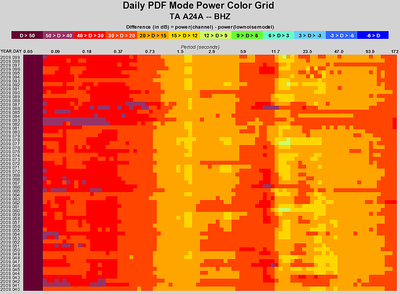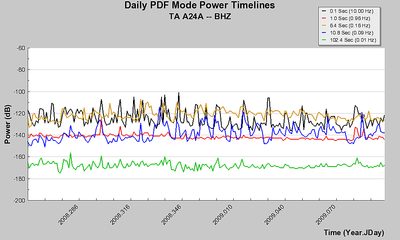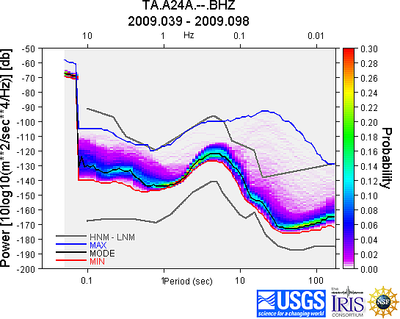Quality Control Efforts on USArray Data at the IRIS DMC
The IRIS Data Management Center (DMC) serves as the final archive for data from USArray, an element of the EarthScope project. A small group of data control analysts is responsible for the DMC’s QC of near-real time data from the seismic components of USArray: Transportable Array (TA), an array of 400+ instruments that is progressively moving eastward across the United States; Reference Array (RefNet), a permanent network of 100+ stations; and Flexible Array (FA), instruments available to researchers for short-term experiments related to EarthScope (the majority of the FA data is not available in near real-time). As a supplement to QC performed upstream from the DMC, the goal of these efforts is to maximize the scientific usefulness of the data by timely identification of instrument problems, siting or vault issues, and metadata errors, and by documentation of the station’s history and performance.
After near real-time seismic data arrives at the DMC, automated quality measurements are calculated using QUACK (Quality Analysis Toolkit) and PQLX. Some of these measurements include data coverage, gap and overlap counts, signal mean and RMS, Power Spectral Densities (PSDs) and Probability Density Functions (PDFs). The PDF measurements are further utilized in creating the PDF Mode Timeline and Color Grid (spectrogram) products which visualize changes in background noise and instrument performance over time. Other products which are available to analysts but not automated yet include waveform comparison with seismic event synthetics and tidal synthetics.
In addition to reviewing the QUACK reports and PDF products, analysts routinely use PQLX to view TA and RefNet station waveforms, both unfiltered and filtered, looking for issues that affect station performance. Specific problems are reported to the relevant network operators as they arise (or the PASSCAL Instrument Center in the case of FA stations); weekly reports document the state of the TA and RefNet. Significant issues that may affect data users are further documented in the form of Data Problem Reports which are available at http://ds.iris.edu/data/dpr.htm. As new stations come online, analysts create station history text files that are updated with information concerning station installation and removal, site visits and repairs, instrument changes, and metadata changes. This creates a convenient record of significant events for each TA and RefNet station.
Examples




USArray is a huge undertaking and relies on the efforts of many institutions including (but not limited to) the DMC, the Array Network Facility, the Array Operations Facility, the PASSCAL Instrument Center, the USGS NEIC/ASL, regional network operators, universities, and state geologic surveys.
More information about USArray QC can be found at: USArray Quality Control Overview and Resources at the DMC
by Gillian Sharer (IRIS Data Management Center) and Chad Trabant (IRIS DMC)






